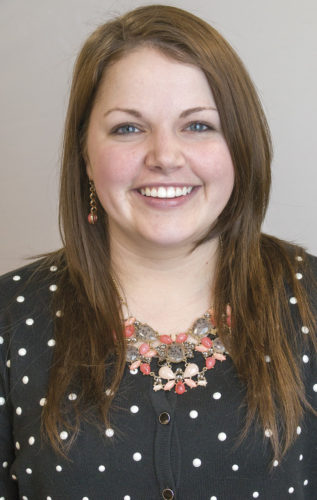Progressive Dairyman Editor Emily Caldwell recently connected with Joy O’Shaughnessy, director of the Women in Agribusiness. The group recently held its second annual summit October 22-24, 2013, in Minneapolis, Minnesota.
O’Shaughnessy presented findings from the recent “The Changing Demographics and Experience of Women in Agribusiness” study, authored by Sarah Day Levesque.

How was the research conducted?
O’Shaughnessy: We asked companies for their demographic information – things like how many women employees, their seniority level, age and ethnicity. Then we had an online survey of women where we asked about their experiences and their motivation.
Then we talked with companies who have programs in place for recruitment, retention or advancement.
Being able to step back and look at the picture from all three perspectives makes the report a valuable tool for companies to hear what’s working, see where the hurdles are and understand what is motivating the women to not only work but also to participate.
So we’re hoping companies see this report as a great first step in creating a program or ways to identify avenues to improve upon what they have.

Your research found that 86.5 percent of women seek professional development outside of their companies. Where are these women finding those opportunities for professional development outside of work?
O’Shaughnessy: We have a mentoring program, and even going to our summit could be considered an advancement opportunity because you’re networking and meeting other people in the industry. There are also many local chapters of national women’s organizations.
There are many places to go, and it doesn’t even have to be female-oriented. That speaks to a desire of women to participate. But only 16 percent of the companies that participated in our research were offering any advancement opportunity for women.

What risk do agribusinesses take when not offering opportunities for advancement?
O’Shaughnessy: Women hold 82 percent of the roles in human resources in the companies we surveyed. So you’re in human resources, you’re wanting to advance, and you’re not getting the help from your company.
It’s just as easy for you to go work in the automotive industry or the tech industry. When the bulk of our female employees are in those types of positions, we run the risk of losing them. So having a program that would help retain them and help them advance would be very desirable.

What are some specific ways that agribusinesses can provide those opportunities for recruitment and advancement?
O’Shaughnessy: It’s a myriad. We don’t have particular numbers on resources or programs that are better than any other in terms of mentorship, succession planning, discussion circles or webinars. All of these things are useful.
Of the women that we surveyed who had participated in advancement programs, 74 percent reported significant advancement. So there’s some data pointing to these programs being successful and useful. Companies need to make those programs a priority, which is difficult to do.
People work long days, and it’s hard to step away from your desk for a mentorship meeting. And it’s hard to do after work hours because people need to go home and take care of their families.
So it is difficult, but if it were made a priority, I think it would show significant growth in women’s representation.
And women need to understand that there is a connection there. While many women say that those types of programs would be nice, there is a lack of confidence in their effectiveness.

What advice do you have for agribusinesses in increasing recruiting programs geared toward women? What do you think it takes to attract females for executive-level positions?
O’Shaughnessy: Of all respondents, 69 percent said that “work that continually challenges you” was their number one motivation in the workplace.
For women in middle management, that percentage was much higher, and for women in senior-level positions, it was 87.5 percent. I think that speaks to women wanting important, meaningful roles. They need to feel like their work has greater meaning, and this feeling is more important to women than men.

Where does the ag industry compare to other industries in female leadership?
O’Shaughnessy: There is a decrease in female representation by seniority as you get higher up the corporate ladder. That’s common to most other industries, and it’s called the stair-step phenomenon. There were industries where the percentages were higher.
Women held more than 74 percent of the leadership positions in education and health services in 2012. Agriculture did not fare particularly well when compared to other industries. Higher on the list were financial services, leisure and hospitality and retail.
These industries have double or more representation of women than agriculture. There are some that were lower – construction, for example. But there is clearly opportunity for improvement.

What advice do you have for recent female graduates and recent female employees in agribusiness? What skills do they need to possess to move up the corporate ladder in an industry that’s still dominated by men?
O’Shaughnessy: I think in our industry specifically, there is a greater need for women with ag-specific discipline knowledge and training.
The vast majority of women in the companies that we surveyed were in positions that are just as applicable to other industries: human resources, customer service, marketing.
There was a much lower representation in positions like IT, research, processing, production. I think it would be a great benefit to women coming into our industry to make sure they avail themselves to training that would speak specifically to the industry that they’re entering.

What are your future plans for the research?
O’Shaughnessy: We’re hoping to conduct the survey biannually to be able to discuss changes in women’s representation and then also look at representation in other countries, as this report only represents North America. PD
To purchase a copy of the report, visit the website or contact Belinda Harter at (978) 887-8800, ext. 133.

Emily Caldwell
Editor
Progressive Dairyman





